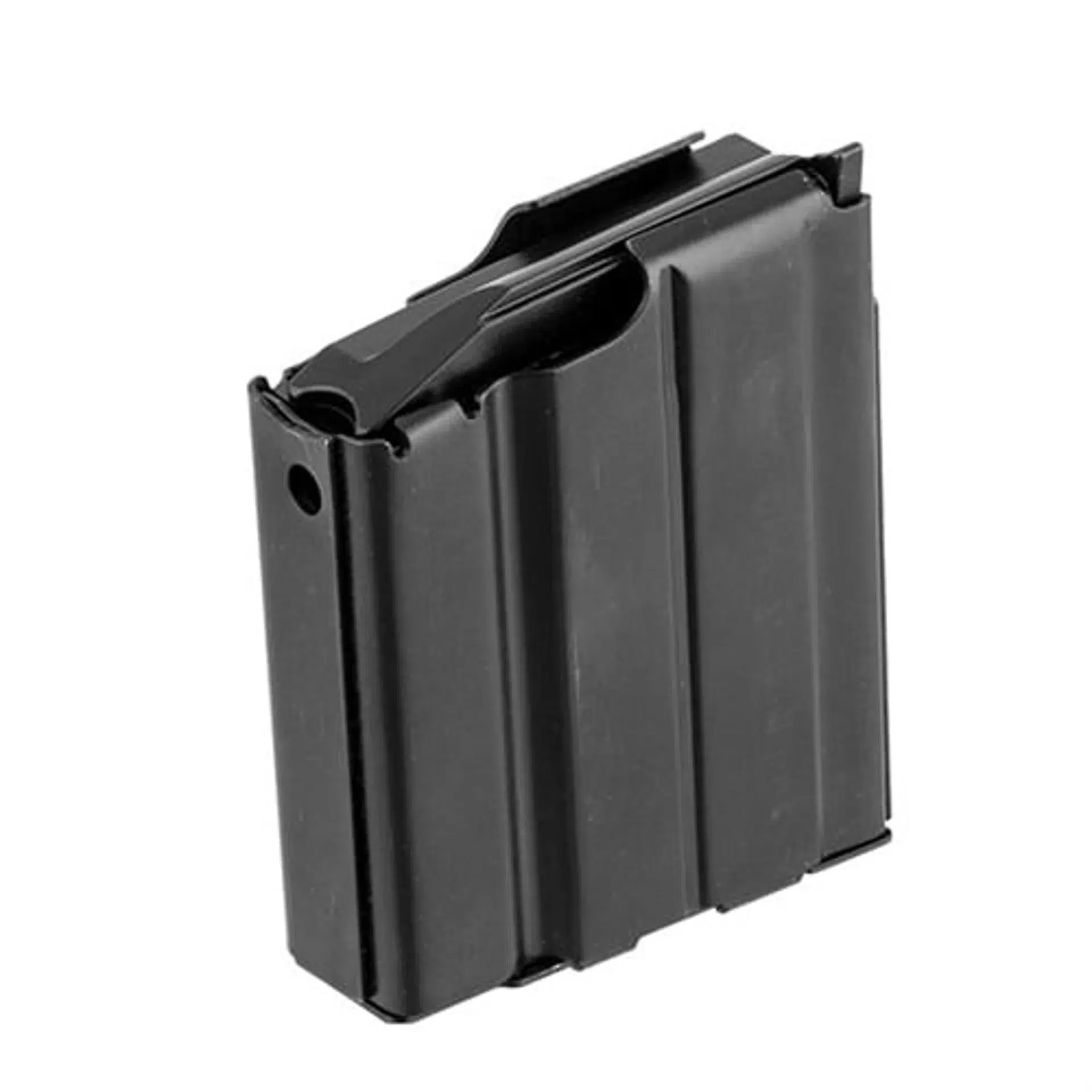
So here’s a funny thing. You can spend years obsessing over rifles, tweaking triggers, swapping optics, and still still you’ll eventually realize that the most underappreciated part of your setup is the magazine. Yes, that simple, boxy, often-overlooked chunk of metal or polymer that feeds life into your firearm. And when it comes to the Mini14 magazine, the story is way deeper than most folks think.
The Mini-14 itself has been around since the 1970s, Ruger’s answer to a civilian-friendly, ranch-ready, lightweight rifle. And like any rifle, it’s only as reliable as the magazine sitting in it. Hunters, ranchers, target shooters even law enforcement agencies have had debates, headaches, and small triumphs all centered around this one accessory. Honestly, the mini14 magazine deserves its own spotlight.
Let’s pull it apart, piece by piece.
What Exactly Is a Mini14 Magazine?
A mini14 magazine is the detachable box that holds and feeds cartridges into Ruger’s Mini-14 rifle. Sounds obvious, right? But here’s the thing—these mags aren’t just storage devices. They’re mechanical lifelines. They determine whether your rifle runs smoothly, jams mid-shot, or delivers that satisfying reliability Ruger’s reputation is built on.
-
Standard Ruger factory mags typically come in 5, 10, 20, and 30-round capacities.
-
Most are made of steel, though aftermarket companies introduced polymer options.
-
The geometry of the feed lips, spring tension, and follower design make or break performance.
A poorly designed mini14 magazine can turn an otherwise reliable rifle into a nightmare. That’s why seasoned shooters often say, “Spend on good mags before you spend on accessories.”
Why the Mini14 Magazine Still Matters Today
You’d think with AR-15 magazines dominating the market, the Mini-14 would fade into the background. But no. Ruger’s rifle carved a niche, and the mini14 magazine is the key that keeps it alive.
-
Ranchers love it. The Mini-14, paired with a sturdy 5- or 10-round mag, makes for a rugged “truck gun.”
-
Collectors value it. Original Ruger-branded 20-round mags now fetch premium prices because of their rarity.
-
Law enforcement once depended on it. In the 1980s and ’90s, many departments used the Mini-14 with factory 20-round mags before the AR-15 took over.
-
Regulations still highlight it. In states with magazine capacity limits, the mini14 magazine is part of the ongoing political debate.
So while the rifle might not dominate like the AR platform, its magazines still spark conversations—sometimes heated ones—about practicality, legality, and legacy.
Features & Benefits of the Mini14 Magazine
Let’s break down what makes these magazines tick and why people swear by certain versions.
| Feature | Benefit | Notes |
|---|---|---|
| Steel Construction | Durability in harsh environments | Ruger’s factory mags are known for strength |
| Various Capacities | From hunting (5-round) to tactical (30-round) use | 20-round mags are considered the “sweet spot” |
| Reliable Feed Lips | Prevent misfeeds and jams | Cheap aftermarket mags often fail here |
| Ruger OEM Quality | Tested for fit and reliability | Factory mags outperform most clones |
| Aftermarket Options | Variety of prices and materials | Some polymer versions lighter, but hit-or-miss reliability |
Key takeaway? Stick with factory Ruger mags when you can. Yes, they’re pricier, but reliability is priceless when a coyote’s running off with your chicken or you’re at the range.
Case Studies: Real-Life Lessons with Mini14 Magazines
-
The Rancher’s Go-To: A Wyoming rancher once told me he keeps two Ruger 5-round magazines in his glove box. Why? Because they don’t snag, they’re legal everywhere he goes, and they’ve never failed him in 20 years of chasing varmints.
-
The Range Disaster: A group of new shooters in Texas showed up with bargain-bin aftermarket 30-rounders. Result? Jams, double feeds, and endless frustration. The moment they switched to Ruger factory mags, their Mini-14s ran flawlessly.
-
The Collector’s Treasure: Original Ruger 20-round factory magazines from the ’80s, still in packaging, are selling for upwards of $100 apiece today. Some gun owners buy them as investments.
These stories underline a simple truth: the mini14 magazine isn’t just hardware. It’s trust in a box.
Mini14 Magazine vs Alternatives
Here’s where the comparisons get juicy.
| Platform | Typical Mag | Pros | Cons |
|---|---|---|---|
| Mini-14 | Steel 5–30 round | Reliable, compact, legal in more states | Costly, fewer aftermarket options |
| AR-15 | Polymer or aluminum, 30-round standard | Cheap, abundant, modular | Too many low-quality knockoffs |
| AK-47 | Curved steel/polymer, 30-round | Legendary durability | Heavy, bulkier |
Truth be told, the AR-15 mag world is bigger, but the mini14 magazine world is tighter-knit. Think boutique coffee shop vs Starbucks.
Problems & Solutions
Problem: Cheap aftermarket mags failing.
Solution: Stick to Ruger factory mags or vetted brands like ProMag (though opinions vary).
Problem: State laws restricting capacity.
Solution: Opt for 5- or 10-round mags; Ruger makes compliant options.
Problem: Scarcity of factory mags during demand spikes.
Solution: Buy in advance, keep spares, and maintain them properly (don’t leave springs compressed for decades).
Myths and Misconceptions
-
“All 30-round mini14 magazines jam.” False. Ruger factory 30-rounders are excellent. Cheap knockoffs? Different story.
-
“Mini-14 mags are interchangeable with AR mags.” Nope. Different design, different locking systems.
-
“Old mags lose spring tension quickly.” With proper storage, Ruger mags can last decades.
-
“You don’t need more than one mag.” Ask anyone who’s had one fail mid-hunt. Always have backups.
The Future of Mini14 Magazines
Here’s where it gets interesting. While the AR world is flooded with innovation, Ruger quietly keeps the mini14 magazine alive with consistent quality. Expect:
-
Continued production of steel factory mags in popular sizes.
-
A possible rise in polymer innovations as demand for lighter gear grows.
-
Higher collector value for vintage Ruger-marked mags.
And—this is speculation, but don’t be shocked if Ruger releases limited runs of special mags for anniversary editions.
Practical Tips for Mini14 Magazine Owners
-
Always load properly—don’t slam rounds in crooked.
-
Rotate magazines in storage to avoid long-term spring compression.
-
Clean occasionally; dirt and grit kill reliability.
-
Mark your mags (paint pen, tape) so you can track which ones work best.
-
If a mag keeps failing? Retire it. Don’t force loyalty on bad gear.
Expert Perspective
According to firearms instructor Dave Lauck:
“The Mini-14 can be as reliable as any AR, but only if you feed it properly. And that means Ruger factory magazines. Everything else is a gamble.”
That’s blunt—but it’s the consensus among pros.
FAQs About Mini14 Magazines
Q1: What’s the best capacity for a mini14 magazine?
A 20-round factory Ruger mag is considered the most balanced—enough rounds without extra bulk.
Q2: Can AR-15 mags work in a Mini-14?
No, they are not compatible. Different locking mechanisms and feed geometry.
Q3: Are aftermarket mini14 magazines reliable?
Some are, but most shooters report best results with Ruger-branded mags.
Q4: How long do mini14 magazines last?
With care, decades. Ruger’s steel mags are extremely durable.
Q5: Are 30-round mini14 magazines legal everywhere?
No. Many states restrict capacity. Always check your local laws.
Q6: Can you repair a failing mag?
Sometimes replacing the spring or follower helps, but if feed lips are bent, it’s better to replace it.
Q7: Why are Ruger factory mags so expensive?
They’re made with high-quality steel, lower production volume, and trusted reliability—hence the premium.
Q8: Do mini14 magazines need special maintenance?
Not much—just occasional cleaning and avoiding long-term moisture exposure.
Q9: Are polymer mini14 magazines worth buying?
Some lightweight options exist, but durability varies. Steel Ruger mags remain the gold standard.
Q10: Where can I buy authentic Ruger mini14 magazines?
Directly from Ruger, authorized dealers, or trusted online retailers like Brownells or MidwayUSA.
Conclusion
At the end of the day, the mini14 magazine isn’t just an accessory—it’s the unsung hero of the Mini-14 rifle. It determines whether your rifle feels like a dependable workhorse or a frustrating paperweight. Ruger’s factory mags may cost more, but they’ve stood the test of time for hunters, ranchers, law enforcement, and collectors alike.
So if you’re building your kit, don’t skimp here. Invest in the right mags, take care of them, and your Mini-14 will serve you faithfully for decades to come.


